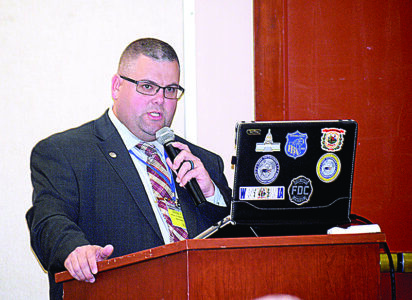Wheeling Officials Signal That Clay School Demolition Is Imminent
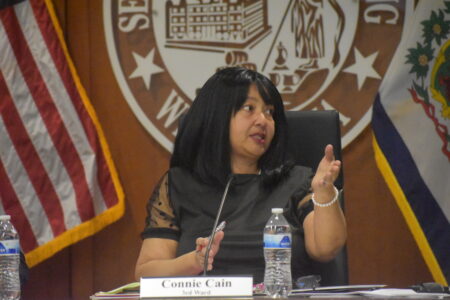
Wheeling City Councilwoman Connie Cain speaks during Tuesday night's Finance Committee of Council meeting. Cain supported demolition of the former Clay School building in her Ward 3 neighborhood, but stressed that residents there want a new recreational facility that they will be able to use and enjoy. (Photo by Eric Ayres)
WHEELING – Members of Wheeling City Council all agreed Tuesday night that the best path forward for the former Clay School property in East Wheeling will be to demolish the building to make room for a new, more modern facility for the community.
Councilwoman Connie Cain, whose residence is situated behind the old school building, said she would like to see it razed, but noted that if a new recreational facility is built there, residents of the neighborhood want to have a center there that is open and available to them.
Although no action was taken by city council on the matter, the Finance Committee of Council opened discussions about the future of the Clay School from a financial perspective. During the discussion that took place immediately before the regular city council meeting Tuesday night, all members of council had an opportunity to express their opinions about the site.
The city hired consulting firm Tipping Point to gather input from residents and other stakeholders, crunch numbers and offer different options for potential redevelopment of the old Clay School. Four different approaches to redevelop the site were offered, and all cost several million dollars – although some eye potential private investment, and the use of historic tax credits and other funding assistance.
But the writing on the wall since Tipping Point’s survey was completed spelled out a looming fate that the former school building will most likely be razed.
Councilman Ty Thorngate, who previously served on the Wheeling Historic Landmarks Commission, noted that historic preservation is typically his preferred option, but fiscal prudence in this case calls for a different direction.
“Obviously, I’d love to save it,” Thorngate said. “Anytime a vote has come up for us to save a building, I’ve voted in the affirmative for each of those. But just looking at the financials with this and looking at where we’ve invested our money over the last couple of years, it only makes sense for us to go with scenario four – which is demolishing and putting something new in its place.”
All council members Tuesday night appeared to agree.
Earlier this month, Wheeling City Manager Robert Herron encouraged city council members to provide direction on the future of the site. Council had approved a contract in the amount of $125,375 with Montrose Environmental of Wheeling for professional environmental services for Clay School. This is for asbestos abatement at the building, which is reportedly full of asbestos, according to the survey.
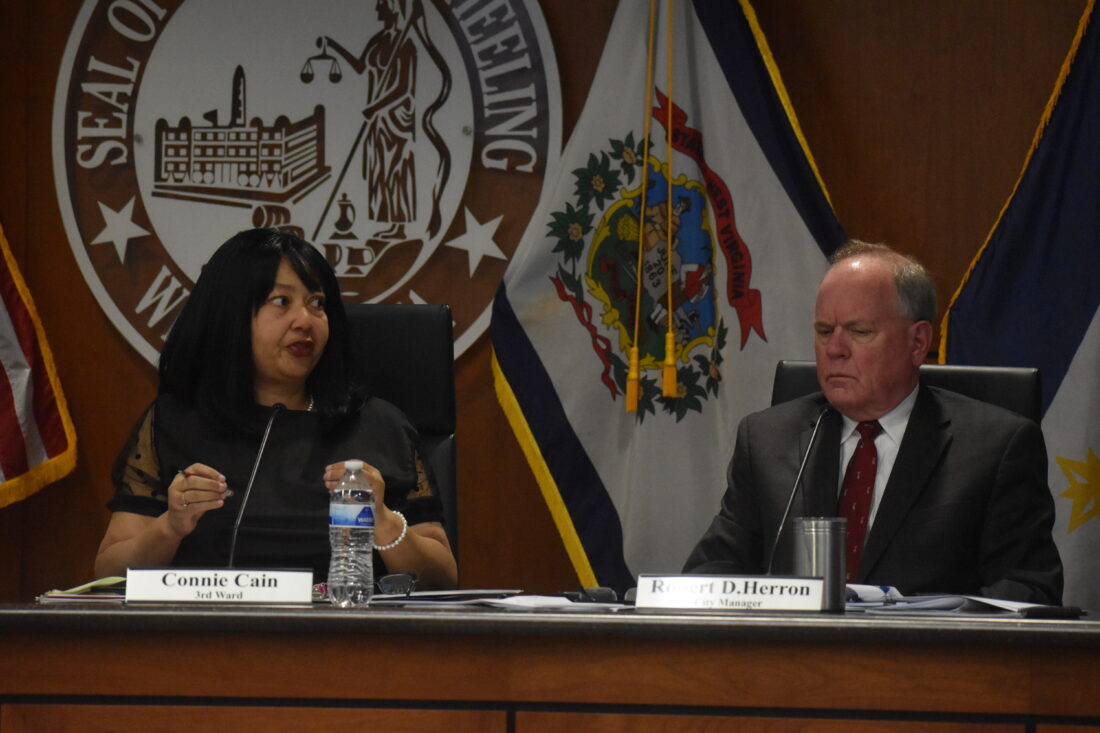
Wheeling City Councilwoman Connie Cain speaks during Tuesday night’s Finance Committee of Council meeting as City Manager Robert Herron listens. Cain supported demolition of the former Clay School building in her Ward 3 neighborhood, but stressed that residents there want a new recreational facility that they will be able to use and enjoy. (Photo by Eric Ayres)
Grant funding from the U.S. Environmental Protection Agency and the West Virginia Environmental Protection Agency has been obtained for environmental remediation and potential demolition, and the city manager encouraged city council members to make a decision about the site before the contracted remediation work begins. Herron noted that the process of removing asbestos can be handled in different ways based on whether or not the building is going to be saved and repurposed or if it is going to be demolished.
Cost estimates ranged from $13.7 million for demolition and “financially feasible” repurposing of the site to as much as $24.5 million for renovations with private ownership of the current building, featuring medical and wellness facilities on the upper floor and a new city operated Nelson Jordan Center for indoor recreation on the first floor.
Cain, who represents the Ward 3 neighborhood of East Wheeling, said she, too, would recommend demolition of the school. When it comes to repurposing the site, however, she stressed that the residents of the neighborhood would like to have a new facility where they can feel welcome and can use anytime.
This was not so much the case when the city constructed the J.B. Chambers Memorial Recreation Park several years ago and opened those facilities along 16th Street adjacent to the Clay School building, Cain said.
“East Wheeling does not want anything connected to that field,” she said. “Locker rooms and showers should be separate for whatever is built there.”
Cain indicated that many people of East Wheeling were left with a bad taste in their mouths after being promised a new multimillion-dollar facility in their neighborhood – the football field complex – yet then almost never being able to enjoy it because other entities in the city are always scheduled to use it.
“They put the field in, and then we can’t get on the field,” she said. “It’s like we got locked out. The residents of East Wheeling – they’re still disgruntled regarding that. We couldn’t take our kids down there because the schools have taken it over. It wasn’t a field for us.”
Cain noted that she lives near the Clay School, and her property would be affected by the demolition of the old building, which retains the hillside in the back of the property. Maintaining that hillside will be part of the potential project in the future if the structure is removed, city officials noted.
If and when a new recreational facility is constructed on the Clay School site, Cain said she wants to make sure the people of the neighborhood can use it and not feel like other entities have stepped in and taken it over.
“If we’re going to tear down a historic building for East Wheeling to build something, then it has to be for East Wheeling,” she said, stating that some residents of the neighborhood have trouble trusting the city when it comes to major projects in their backyard now. “That’s why I’m on city council. To give us a voice.”
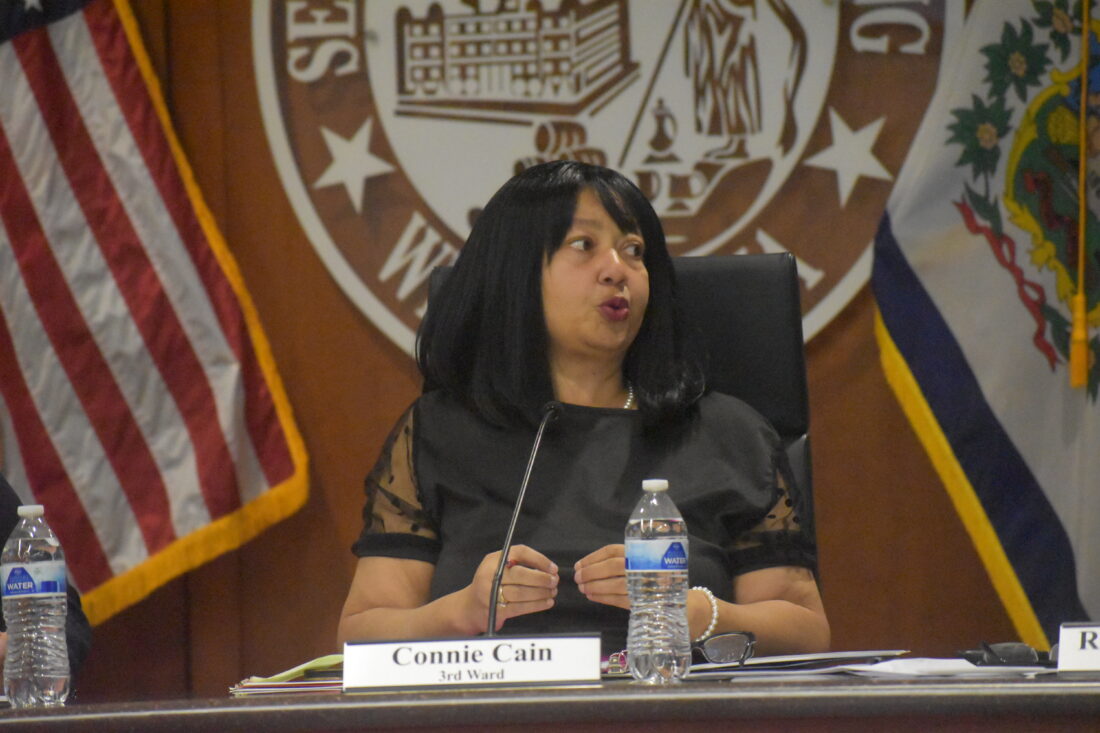
Wheeling City Councilwoman Connie Cain speaks during Tuesday night’s Finance Committee of Council meeting. Cain supported demolition of the former Clay School building in her Ward 3 neighborhood, but stressed that residents there want a new recreational facility that they will be able to use and enjoy. (Photo by Eric Ayres)
Herron noted that the field in East Wheeling is used by a number of entities, from Wheeling Central Catholic High School to other entities like Wheeling Park and the Little Patriots for practices, Laughlin Chapel, the Wheeling Recreation Department and other organizations, as well as people of the neighborhood.
“The field is scheduled – it’s always open when there’s not somebody playing on it,” he said, noting that a new facility – such as a new location for the Nelson Jordan Center – should also be available to everyone but also have scheduled activities. “There’s going to be open play there, obviously.”
Councilman Dave Palmer, chairman of the Finance Committee, stressed that if the city builds a new facility there, the intended use will be for anyone in the city.
“I don’t think anyone on city council or the city administration wants to ‘lock East Wheeling out’ of the new facility,” Vice Mayor Jerry Sklavounakis said, who also supported the demolition option for the property.
“Looking at the studies and the numbers, I, too, have come to the conclusion that the only thing we can do at this point is demolish it. That makes the most sense,” Mayor Denny Magruder said. “We’re in desperate need of a new community Nelson Jordan Center that’s modern-day where the youth there can support it.”
Council members Tony Assaro and Ben Seidler also agreed that razing the Clay School building is the right thing to do. All city officials agreed that the needs and concerns of the East Wheeling residents should be considered when planning for a new facility at the site.
The Clay School first opened more than 80 years ago and operated for decades as part of the city’s public school system before closing its doors in the 1990s. Several attempts by private investors had been made to bring a new life to the sprawling structure along 15th Street, but no ventures to redevelop the property ever took root.
In December of 2021, the city of Wheeling acquired the structure.
Members of the Finance Committee Council unanimously agreed to recommend demolition of the Clay School site. Palmer recommended sending the matter on to the Health and Recreation Committee of Council to discuss options for the site after the building is demolished. Cain is the chair of the Health and Recreation Committee.
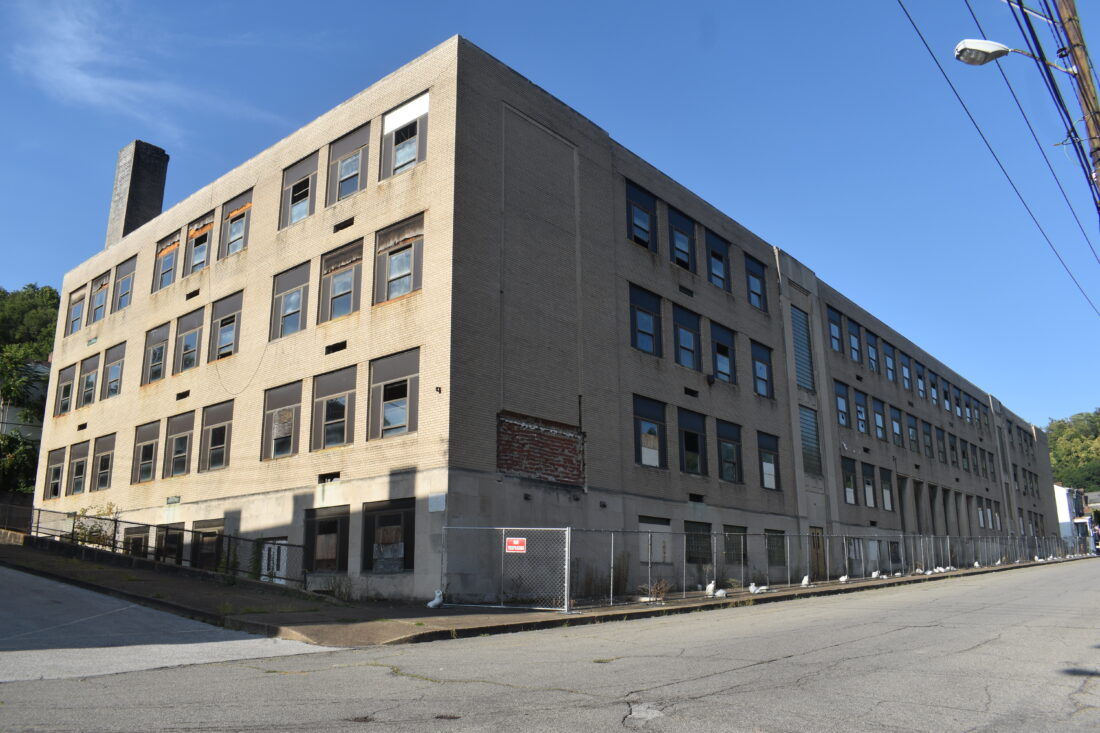
The former Clay School building has sat vacant in East Wheeling since closing its doors as a public school building in the 1990s. The property is owned by the city of Wheeling today, and city leaders are expected to decide the fate of the building in the coming weeks. (File Photo by Eric Ayres)



